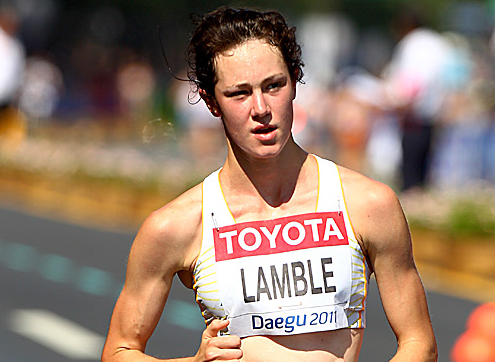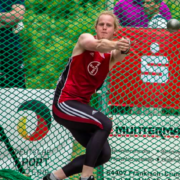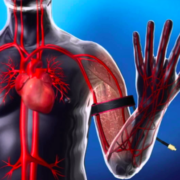PULSES-Not the one in your wrist!
Jessica Rothwell is one of Australia’s best ever race walkers. Jess has represented Australia on more than 5 occasions. Not only is she talented, Jess is also an extremely intelligent dietitian.

Jess
Having studied a Masters in Dietetics at La Trobe University she has a particulary in-depth understanding of the needs of athletes.
Harradine Performance is delighted to have Jess as one of our trusted contributors to Knowledge Share, bringing a high performance mindset to our nutritional needs and making sure we are optimising our efforts to fuel our bodies.
Reading this article on Pulses and Legumes will open your mind (if its not already opened) to a wonderful world of new tastes and dishes to try. Remembering its not what we do on occasions that helps us reach our goals, its what we do everyday.
Thankyou Jess.
Pulses pretty please.
2016 is the International Year of Pulses – so what are exactly are pulses, are they nutritious and how can they be tailored into our kitchen routines as well as our gym programs? Meatless Monday’s are a fabulous way for individuals to incorporate these gems into a varied lifestyle of eating.

Pulses
Pulses sit within the legume family & are the dried seeds of plants. With such a large variety, they can easily be substituted into any meal or eaten as a snack! You will also be familiar with baked beans, perhaps reminiscent of your early childhood days or forming part of your post-work out recovery snack.
Australian pulses include – Chickpeas, faba/broad beans, lentils, mungbeans & green peas. Other types of legumes include, red kidney, butter, borlotti, cannellini & black-eyed beans, alfalfa, soybeans & believe it or not peanuts. The hottest new legume gaining momentum is the Sweet Australian Lupin due to its outstanding protein and fibre content & cardio protective health benefits.
The hottest new legume gaining momentum is the Sweet Australian Lupin due to its outstanding protein and fibre content & cardio protective health benefits.
Nutritious?
Pulses and legumes are incredibly nutritious. They are valuable sources of protein, smart carbs, good fats, fibre & contain B Vitamins, Iron, Folate, Zinc, Calcium, Magnesium, Potassium & other minerals. This means for you – they’re assisting your body with energy production & electrolyte balance, bone and blood formation, muscle functioning and recovery plus the maintenance of a healthy weight! The fibre and resistant starch is known as prebiotic – which essentially feeds the good bugs in your gut, boosts your immunity and stabilises blood sugar levels, perfect for digestive health.
Pulses or legumes are particularly beneficial for vegetarian athletes as an alternative source of protein and micronutrients. However, as only soybeans and it’s products including tofu, tempeh, miso soup, edamame beans or soy milk contain the full essential amino acid profile, it is important to pair all other pulses & legumes with a grain source such as rice, barley, wholegrain bread or the super seed quinoa!
They are valuable sources of protein, smart carbs, good fats, fibre & contain B Vitamins, Iron, Folate, Zinc, Calcium, Magnesium, Potassium & other minerals.
A perfect pulse?
Unfortunately no food in isolation is perfect which is why I recommend consuming a wide variety of foods to increase nutrient uptake & enjoyment! Legumes & pulses are generally considered poor sources of Vitamin C and despite their excellent nutrient profile, contain anti-nutritional factors that can impact on nutrient absorption.

To combat these factors follow the cooking instructions properly, try fermented or sprouted varieties, buy tinned (which are nearly, equally as nutritious compared with dried) & add a source of Vitamin C such as lemon juice, tomato, avocado or capsicum, which will also enhance iron absorption!
Considerations – Toot toot!
Most legumes contain a sugar called GOS (Galacto –oligosaccharide). Interestingly, no human being actually has the enzyme to break this down. It is therefore important to find the right balance for your body and consume in moderation, otherwise you will be left feeling uncomfortable, bloated & with a tum full of gas – nobody enjoys the alphabet song… Because of this, it may also in your best interest to save your musical friends for post run, walk or following intense work – outs! To help reduce some of these side effects I suggest removing the transparent coating of pulses or legumes (chickpeas) & following the soaking and cooking instructions accordingly.
For those who experience Irritable Bowel Syndrome (IBS) it is best to test your tolerance & avoid legumes during stressful occasions. For further advice, consult with an accredited practising sports dietitian.
What is Olympian & 20km Race Walker Regan Lamble’s favourite legume dish?
“A hearty, healthy big bean burrito with brown rice with guac, cheese, salsa & leafy greens.” Following a long walk, this is a great option because it provides a variety of nutrients & energy:
| Foods | Main Nutrient Profile | Benefits
|
| Brown rice, beans & wholegrain wrap | – Complete protein & SMART Carbohydrates, B Vitamins
– Fibre – Iron/ Folate |
– Muscle recovery & glycogen restoration
– Healthy digestive system – Red blood cell production |
| Cheese | – Calcium
– Protein |
– Bone health, cell repair |
| Avocado | – Mono & poly – unsaturated fats
– Antioxidants (Beta carotene, Vitamin C) |
– Healthy cells, skin & hormonal balance
– Reduced inflammation |
| Leafy Greens & Salsa | – Antioxidants (Beta carotene, Vitamin C)
– Iron/folate |
– Repair & growth of new blood cells & tissues – increased absorption of iron (from plant sources)
– Immnunity |
How can you be like Regan & include more pulses & legumes into your day?

Regan at work
Breakfast:
à Tasty home – made baked beans on wholegrain toast
à Avocado and hummous on wholegrain toast
à Lemon, basil & butter bean dip on a piece of rye bread with roasted tomatoes
Snacks:
à Home – made bean dips with vegetable sticks, on wholegrain biscuits or spread on a piece of wholegrain bread.
à John West Tuna/Salmon & Bean mixes
à Edamame beans/ roasted chickpea snack packs
à Egg & bean fritters
Lunch & Dinner:
à Legumes, tofu & peanuts can be added into salads, soups, bolognese sauces & your favourite curries
à Tofu burgers with your favourite salad fillings or bean burritos
à Stir fry’s with tofu, a source of grain & your favourite vegetables

Yumo!
If you would like to know more about simple but effective eating ideas, come and join us at Coles, Coorparoo on Saturday 20th of February. Its completely free. More information can be found here.












